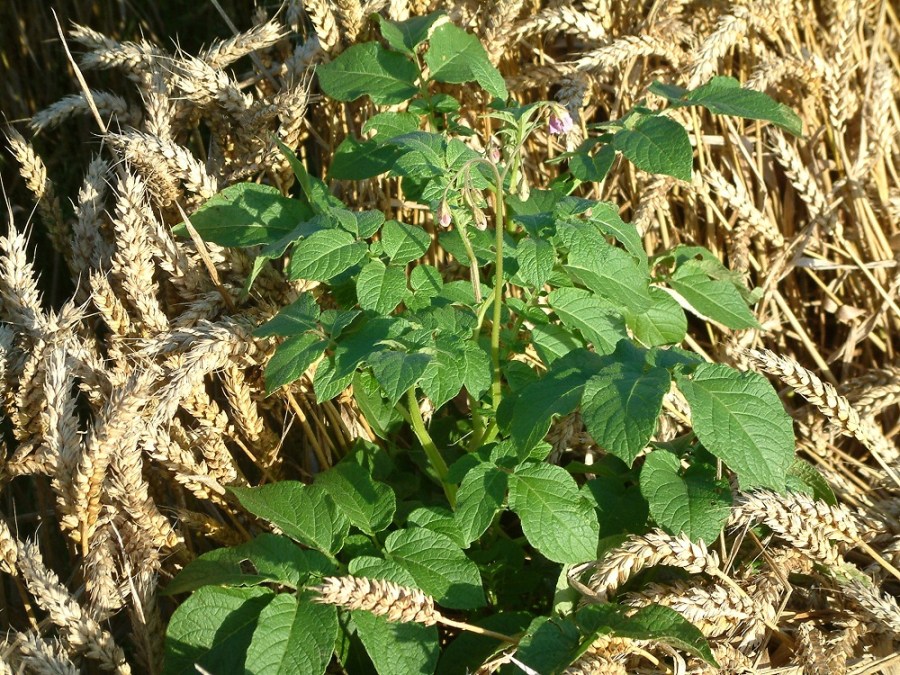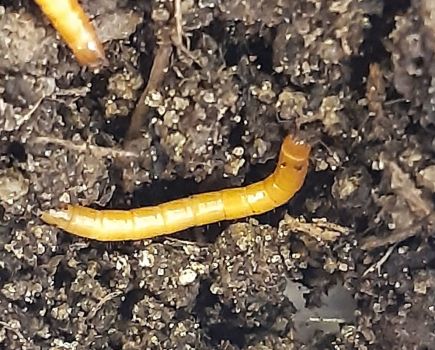Since maleic hydrazide’s approval was renewed with the proviso that treated crops can’t be fed to livestock there’s been a lot of confusion. CPM gets some clarity on where it leaves growers this season.
Some processors have already contacted growers to say they will only accept potatoes treated with the old label.
By Lucy de la Pasture
As potato crops continue to bulk up this month, thoughts begin to turn to maleic hydrazide application. For many growers it’s a useful strategy to suppress sprouting during storage and reduce the numbers of volunteers in subsequent crops which carry over a host of disease and pest problems.
Maleic hydrazide has been winding its way through the increasingly complex corridors of the EU pesticides regulations under (EC) No 1107/2009. It successfully gained Annex 1 status on its reapproval last year, but the new regulatory requirements placed on all maleic hydrazide products have been causing some confusion in the industry, explains head of technical services at UPL, Don Pendergrast.

Heavy rainfall during June has triggered a number of Hutton Criteria warnings across the country.
Like many other active substances going through the re-approval process, the difficulty has arisen not due to the maleic hydrazide itself but the regulatory focus on its metabolites, he explains. The expert review by European Food Safety Authority (EFSA) has identified data gaps concerning the metabolites which has led to the imposition of a restriction preventing any crop wastes (peelings or stock feed potatoes) being provided as livestock feed.
Even though the genotoxicity and toxicity testing didn’t reveal any concerns, the testing was viewed as ‘incomplete’, which in EU regulatory speak means there’s some uncertainty remaining over its probable safety in the food chain because there’s a possibility that 3-pyridazinone ‘may’ be produced during farm livestock digestion.
The current situation for growers is that there’s ‘old’ and ‘new’ label product available this season, with old label product in the use up period (which ends on April 30, 2020) and product that’s been manufactured under the new label.
“All new label product has a statement saying, ‘Do not feed treated crops to livestock’ so growers are going to need to check their labels carefully and keep records to identify where old and new label stock has been applied in order to comply with the legislation,” he advises.
AHDB released a statement last month suggesting growers should contact their supply chain customers to find out their position on maleic hydrazide treated potatoes. “It’s anticipated that very few, if any, will accept crop treated with the new label as most businesses are not able to segregate waste.”
Specialist potato agronomist, John Sarup of Spud Agronomy based in Yorks, says many of his growers have a stock of old label product to use up this season. “For those who haven’t got any old stock maleic hydrazide, there’s always the dilemma whether to risk applying new label to crops. But some processors have already contacted growers to say they will only accept potatoes treated with the old label and will be carrying out due diligence checks during the course of the season.”
The industry statement goes on to say, “The owner of the potato crop has the responsibility to ensure that potatoes that have been treated with new label maleic hydrazide products don’t enter the livestock feed supply chain. This means you must inform anyone who buys potatoes from you if they’ve been treated with new label products. The owner of the potatoes also has the responsibility to avoid on-farm waste and out grades being fed to livestock.”
With all the emphasis being on the grower, it leaves them in a tricky position which is something Don fully recognises and has been working together with other manufacturers to get the restriction lifted by submitting new data, but it has become apparent that there won’t be any prospect of a label change before application this season.
The necessary trial work on feeding treated crop to livestock and the subsequent detailed risk assessment is unlikely to be complete until later this year. It could then take another 12-18 months for EFSA to respond to the findings.
“We acknowledge that this is a disappointing outcome and have worked to ensure it’s as easy as possible for growers to distinguish between the two product variants, by providing an alternative MAPP number for Fazor. Our technical team is also on hand to answer questions regarding the product and its stewardship,” says Don.
“We’ve highlighted our concerns regarding the livestock feeding provision and are now working together as an industry task force to produce the data necessary to potentially lift the restriction.”
The new maleic hydrazide label situation has a potential knock-on effect for blight control where growers stop applying it this season to ensure their customers will accept the crop, believes John Sarup.
“Maleic hydrazide provides control of volunteer potatoes and these are the biggest problem we have as they’re the primary source of late blight inoculum, as well as carry-over of rhizoctonia and pest problems such as free-living and potato cyst nematodes.”
The prospect of large piles of waste potatoes left to rot down in the corner of the farm because they can’t go as stock feed, is not going to help the fight against blight. The first genotyping results from samples of blight collected by blight scouts has revealed the aggressive strain 36_A2, which has proved difficult to control in recent years.
According to Dr David Cooke, of the James Hutton Institute where the AHDB-funded testing is conducted, of the 15 samples confirmed as blight to date, six have been genotyped. The first samples from cull piles in South East England were genotype 36_A2.
“The other more recent samples from Essex and Suffolk have been confirmed as 36_A2 with a further one from Kent being a mix of genotypes 36_A2 and 6_A1.
“It’s too early to draw conclusions about how the national picture will look, but this gives growers, particularly those in the South East and Eastern England, advanced warning of the strains in their area.”
The heavy rain in June has ramped up the blight pressure in many areas, just at the time when many blight crops are going through rapid canopy expansion.
In the Waveney Valley, Norfolk, full Hutton Criteria were recorded for June 11, 12 and 13 (just as the heavens well and truly opened), with more occurring during the month as the rainy conditions continued.
Hutton Criteria occurs when a location experiences two consecutive days with a minimum temperature of 10°C, and at least six hours of relative humidity (90%). This methodology came about following research funded by AHDB Potatoes, undertaken by the James Hutton Institute. It’s believed that this is one of the most accurate ways of forecasting potato blight, explains UPL’s Pam Chambers.
“Despite the warm dry weather last year, three newer clones (EU_36_A2, EU_37_A2 and EU_41_A2) increased in frequency. The survival and spread of these clones, when others are decreasing or have failed to establish, suggests they are evolutionarily fit and could prove more challenging to manage.
“Wageningen University carried out a number of studies on mancozeb for UPL Europe and concluded that the fungicide is effective against all strains of late blight. In addition, it’s a critical component of resistance management and integrated disease management programmes for both early and late blight,” she adds.
“Although mancozeb prevents spores from germinating and infecting the potato plant when applied prior to spore release, once infection has occurred and penetrated the leaf, it will no longer control the disease. This means that timing of mancozeb is important, as is the selection of partner actives.
“A combination of propamocarb with cymoxanil, such as in Proxanil (cymoxanil+ propamocarb hydrochloride), offers excellent protectant and curative properties, which may be crucial this season. With a 14-day harvest interval and a maximum individual dose of 2.5 l/ha, Proxanil can be applied up to four times within a blight programme,” she adds.
Last year saw the approval of new blight fungicide, Zorvec Enicade (oxathiapiprolin), but the exceptionally dry season meant that the product wasn’t in the demand that it would have been in a more blighty season. 2019 is proving very different, with heavy rain and waterlogged ground in many areas stretching blight spraying intervals while the crop was growing rapidly.
Corteva Agriscience’s field technical manager Craig Chisholm suggests growers consider the length of protection they need and whether their chosen blight spray has any curative properties.
“The potential for a high blight pressure year was already present due to the increase in volunteer potatoes across the rotation, coupled with the mild winter. Dry conditions and recent cooler temperatures kept a lid on it.
“But the deluge of rain in June and rising temperatures triggered warnings across many key potato areas. Growers will be particularly concerned about this as many crops are at rapid canopy stage and need protection of vulnerable new growth.”
Where sprays have been postponed by the conditions, a product with some curative activity will help tackle any blight infection already developing in the crop, he says.
“Choosing an active ingredient with curative properties will ensure growers claw back some of the days of lost protection.”
Flexibility on timing future sprays is also part of the conundrum, he points out. “The efficacy of most blight sprays burns out after seven days. By including a molecule such as oxathiapiprolin in a programme, growers will be better able to cope with inclement weather because it has a 10-day spray interval, providing flexibility for growers.
“Under high blight pressure when agronomists would generally be looking at reducing spray intervals to five days, the robustness of oxathiapiprolin will enable growers to stick with their seven-day schedule, enabling crop coverage to be maintained.”
Popular products containing MH available in the UK
- Gemini Itcan SL270
Both ‘old’ and ‘new label’ products share same MAPP number: 17957
Read the label
- Certis Crown MH
Both ‘old’ and ‘new label’ products share same MAPP number: 18018
Read the label
- UPL (Arysta) Fazor
‘Old label’ MAPP numbers: 13617
‘New label’ MAPP number: 19074
Read the label
- Drexel Source II
Both ‘old’ and ‘new label’ products share same MAPP number: 17858
Read the label
Last storage season for chlorpropham
On 17 June it was announced that chlorpropham (CIPC) is to be withdrawn after it was decided not to renew its approval. The European Commission has effectively taken the decision to ban CIPC itself as previous votes on the matter at EU Standing and Appeal Committees failed to reach a qualified majority.
It’s a move that’s been widely anticipated by the industry after a draft banning regulation was put forward by the Commission around the turn of the year. The withdrawal period stated within the regulation is 8 Jan 2020 with storage and use-up by 8 Oct 2020 at the least, with CRD still to confirm the exact dates that will apply to products in the UK.
“Early use of CIPC is likely to be needed this season, especially where maleic hydrazide hasn’t been applied to crops because of the new label restriction,” predicts John Sarup.
“We’re looking at storing processing potatoes at cooler temperatures and then warming them up in store to burn off any of the sugars they’ve accumulated under the cooler conditions, which would result in dark fry colours normally. It’s a tricky one because once the potatoes have been brought back up in temperature then they will need to be moved out of store in a fairly short time-frame,” he explains.
John expects a lot more usage of alternative sprout suppressants, such as spearmint, this year as growers move away from CIPC.




